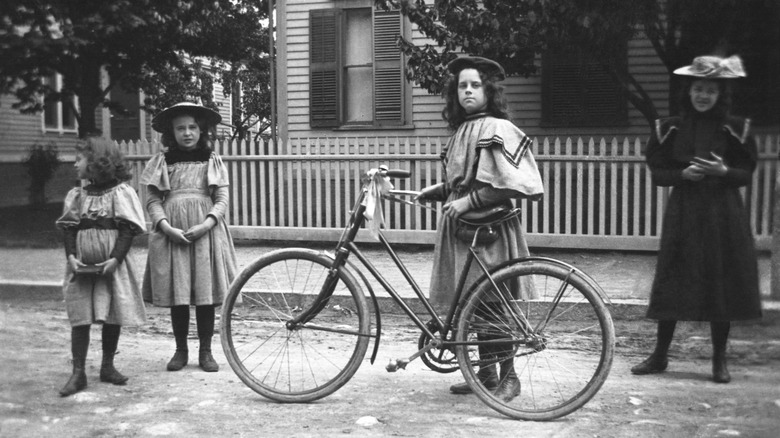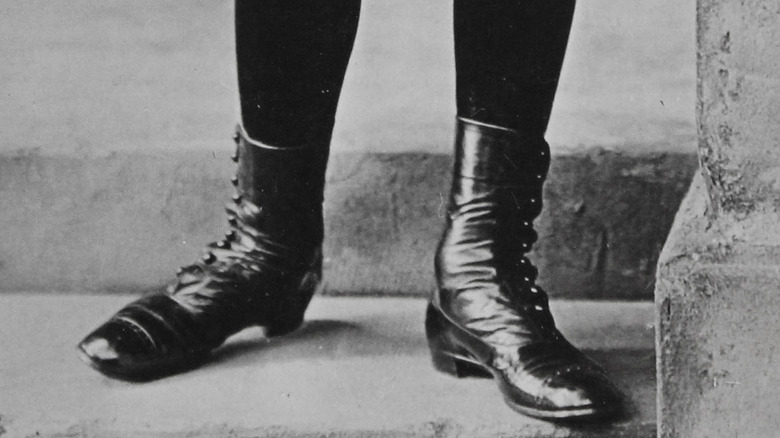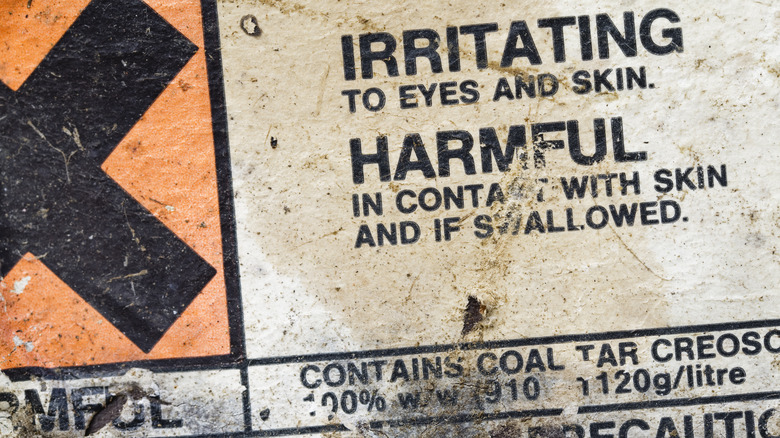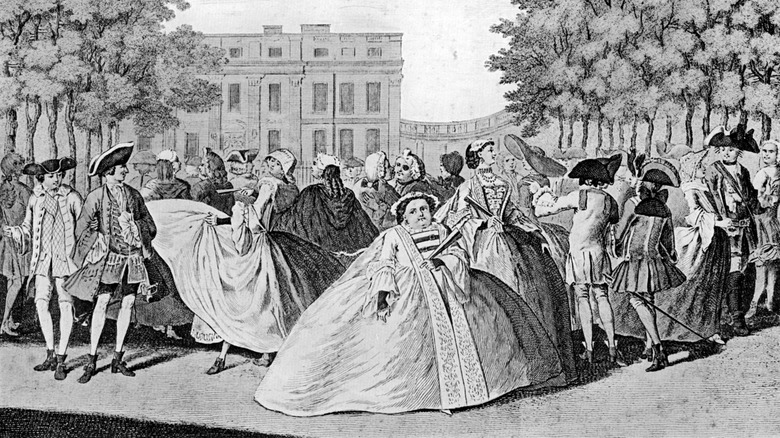This Victorian Shoe Trend Was Hazardous To One's Health
Fashion trends in general are known to be unhealthy for your wallet, or even, ultimately, for your self-esteem once enough time passes for you to see how cringe your cutting-edge haircut or style of pants was at the time. Few of the things people wear today, however, are known to be actively harmful.
But things were very different back in the 1800s, a century when some articles of clothing were actively dangerous to the people wearing them. Women's corsets, for example, could be so tight that they would cause their wearers to faint due to breathing difficulties — think about the instances of Victorian women suddenly passing out in Victorian books and plays, their corsets might have something to do with why! Even worse, corsets have since been proven to be the cause of serious internal injuries, including deformation of the ribcage and digestive dysfunction. And around the turn of the 20th century, there was even a risk of being poisoned by your own shoes — especially if you'd gone through the effort to dye them elegantly black.
Deadly dyes
France seems to have been the epicenter of historic stories about the potentially deadly effects of newly polished shoes. One story reported by the Montreal Gazette from 1900 concerns a French girl who complained that she was suffering from sudden dizziness, an affliction that soon affected the girl's siblings. Soon, the children's lips had turned blue, a terrifying sight for their worried parents. However, they soon worked out the culprit: the children's shoes, which had all just been freshly dyed from yellow to black by the parents to prevent dirt from showing so easily.
The dye in question turned out to contain aniline, a toxic chemical that, if the dye on the garment is still wet can easily be absorbed through the skin, causing poisoning. Once in the bloodstream, aniline causes a chemical change in the blood that affects hemoglobin which is essential for the transfer of oxygen. The hemoglobin changes to methemoglobin, causing Methemoglobinemia, a condition that turns lips, skin, and fingernails a blueish purple hue, and is potentially deadly.
Is aniline poisoning still a risk?
Aniline remained a common ingredient in shoe dye well into the 20th century, with one case study from 1990 outlining a similar case involving a young man poisoned by the dye becoming semicomatose within hours of exposure (via The National Library of Medicine). Thankfully, such instances seem vanishingly rare.
However, according to the Agency for Toxic Substances and Disease Registry, those whose work environments include interaction with dyes, polishes, or other industrial substances may be at risk of long-term exposure to aniline. In response, the Occupational Safety and Health Administration (OSHA) has passed regulations that ensure there are no more than five parts of aniline per million parts of air in industrial workplaces.
Environmental health bodies have undertaken various investigations into aniline levels in the general environment, but have found little evidence that it exists at hazardous levels as a result of industry. Nevertheless, it is advised that children are prevented from playing at waste sites due to the risk of potential aniline exposure.
Potentially deadly Victorian fashion
While fatal aniline poisoning through one's shoes was a freak occurrence in the Victorian era, the dyes used in socks reportedly irritated the feet of the men who wore them, and worse, caused bladder cancer in the people who worked with the dyes, according to National Geographic. Meanwhile, for women, nerve damage through the use of lead makeup, which was widely used to give a pale complexion, was a common occurrence. Some say the term "mad as a hatter" may have come from the Victorian era when hat makers used mercury as an adhesive to attach animal fur to hats. The Mercury was known to cause cardiorespiratory, neuromotor, and psychological problems, along with causing teeth to fall out and early death.
There was a whole range of Victorian fashions — besides the dreaded corset — that could potentially be fatal to the 19th-century dames or dandies that sported them. But perhaps the deadliest was the fashion for crinolines — wide frocks or "hoop skirts" of extravagant width which drew wide criticism from cartoonists of the day due to the perception that they imposed on the women's husbands due to their size. While such opprobrium tended to focus on crinolines' impact on the etiquette of the day, their actual risk was that they were a fire hazard, with their wearers often knocking over candles and lanterns which could easily make the flammable dresses catch fire, killing many women.



